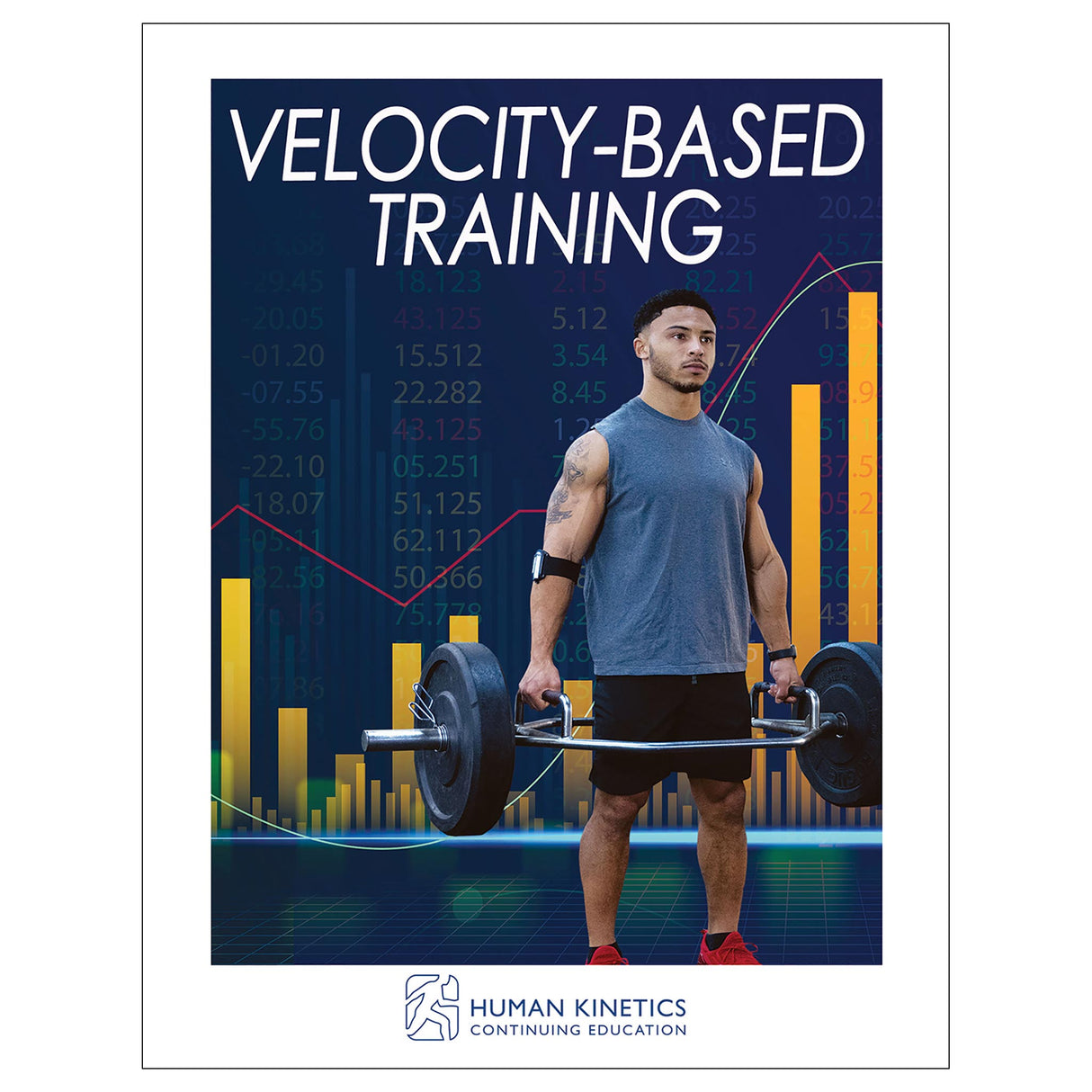Velocity-Based Training Online CE Exam With Print Book
Author: Human Kinetics
$138.95 CAD
Human Kinetics strongly recommends that you complete your exam within the calendar year of your date of purchase to ensure approved credits do not expire for your organization.
- Velocity-Based Training book
- Online continuing education exam
Author Nunzio Signore is one of the most in-demand strength and conditioning coaches in New York and has worked with players from the Minnesota Twins, Anaheim Angels, New York Yankees, New York Mets, Arizona Diamondbacks, and Seattle Mariners, to name a few. Signore will show you how bring your athletes to greater levels of strength, speed, and power at a faster rate. You will find the following:
- Descriptions of the different types of VBT devices and the pros and cons of each, enabling you to select the best option for each athlete
- Instructions on how to use VBT to assess athlete readiness and set specific training parameters for maximum results
- Information on how to use VBT to ensure athletes are training at the appropriate intensity according to where they are in their yearly training plan
- Expert guidance on how to use VBT daily with athletes of various training ages and ability levels
- Sample programming that includes exercises, intensities, and tempos for all four training seasons (postseason, off-season, preseason, and in-season), allowing you to set thresholds that minimize the potential for undertraining or overtraining
After reading the book, certified professionals can take the companion CE exam to earn continuing education credits.
Learning Objectives
- Define velocity-based training (VBT) and explain the benefits of using VBT for improved performance.
- Articulate the relationship of concentric and eccentric actions to VBT.
- Choose the type of exercise and measuring protocol to implement VBT for desired adaptations.
- Analyze the various tools available for VBT.
- Explain the basic setup for linear position transducers and accelerometers.
- Describe the four special strength zones used for VBT.
- Connect the four special strength zones to desired adaptations of training.
- Compare the methods of calculating a 1RM.
- Explain the relationship between load and velocity.
- Apply VBT to develop an individual force–velocity profile for training.
- Recognize the relationship between the CNS and fatigue in training.
- Describe the role of VBT in monitoring recovery and fatigue.
- Utilize velocity-loss monitoring to stimulate specific training adaptations.
- Apply the concept of periodization in planning for various athlete and sport needs.
- Use VBT to train in the appropriate special strength zones throughout the year.
- Describe the main goals of the five training phases.
- Apply training parameters to train in the appropriate VBT special strength zones for the early off-season and mid–off-season.
- Apply the correct velocities and velocity losses to the various types of power outcomes.
- Recognize the impact of the characteristics of the sport on the distribution of in-season training time.
- Identify the benefit of undulating periodization when using VBT for in-season training.
- Explain the keys to maximizing the use of VBT in an annual training plan.
Audience
Certified strength and conditioning coaches, personal trainers, and athletic trainers who work with athletes of all levels.Chapter 1. Breaking the VBT Code
Chapter 2. Understanding the Metrics
Chapter 3. Tools of the Trade
Part II. Getting Started
Chapter 4. The Special Strength Zones
Chapter 5. Calculating a One-Rep Max
Chapter 6. Using Autoregulation and Velocity Loss
Part III. Programming
Chapter 7. Yearly Periodization Using VBT
Chapter 8. Early Off-Season: Tissue Prep and Hypertrophy
Chapter 9. Mid–Off-Season: Submaximal and Maximal Strengths
Chapter 10. Late Off-Season and Preseason: Transfer to Sport-Specific Power
Chapter 11. In-Season: Strength and Power Maintenance
Chapter 12. Sample Programming





